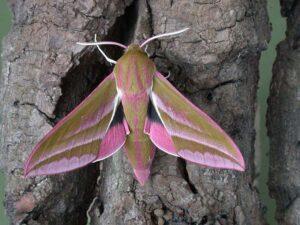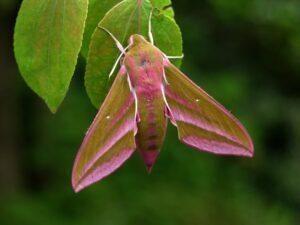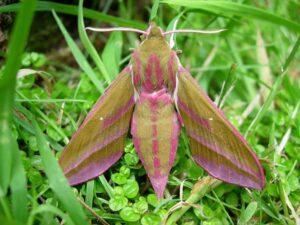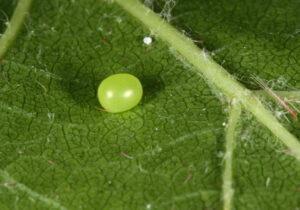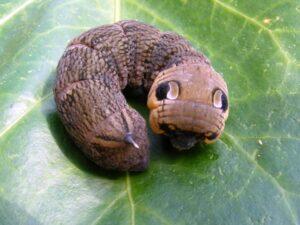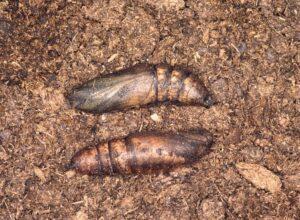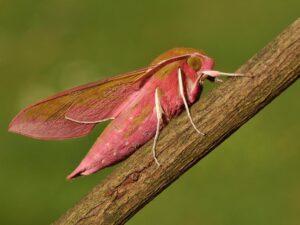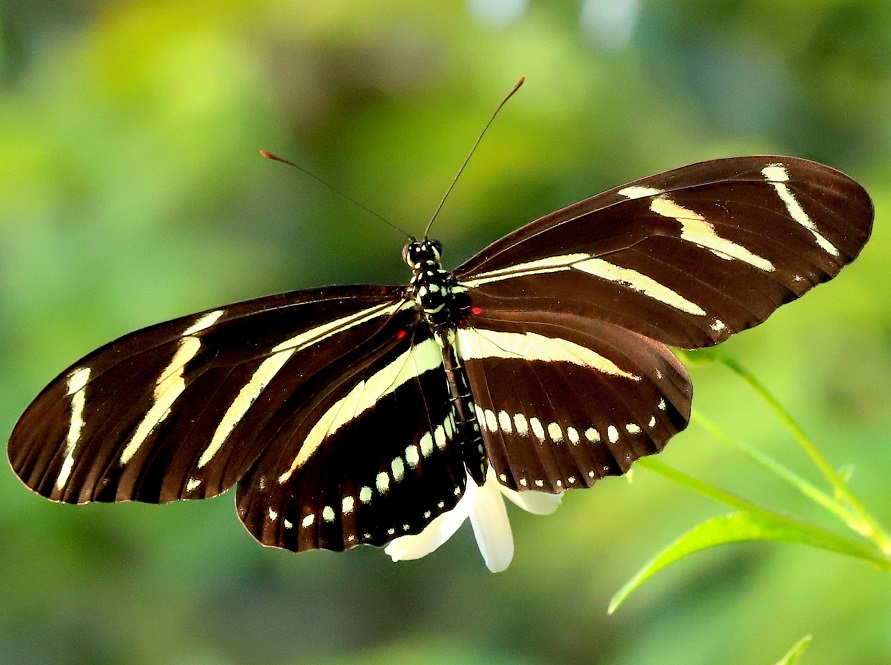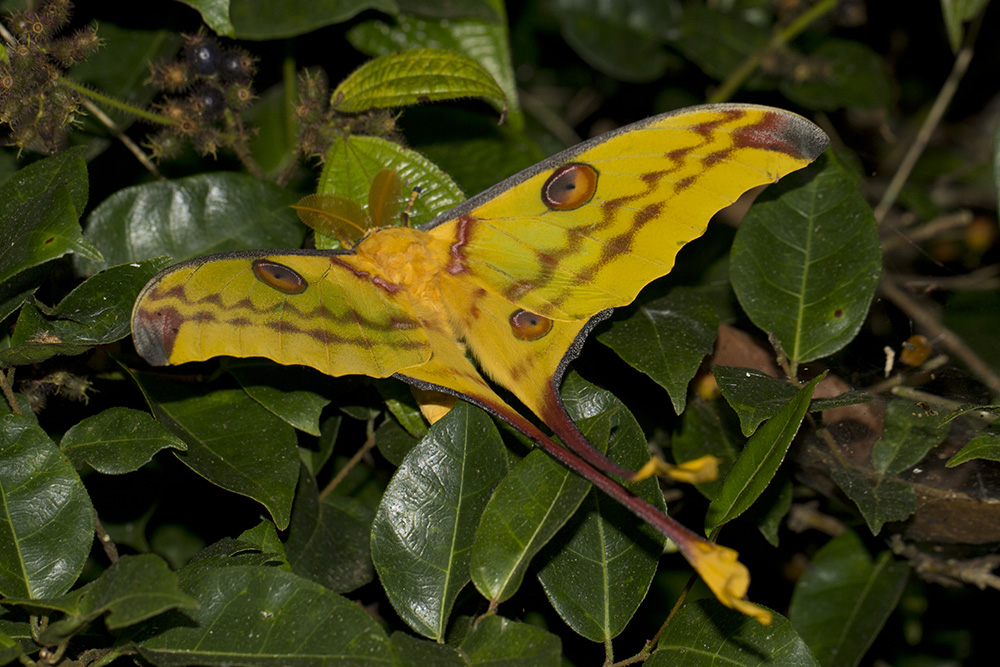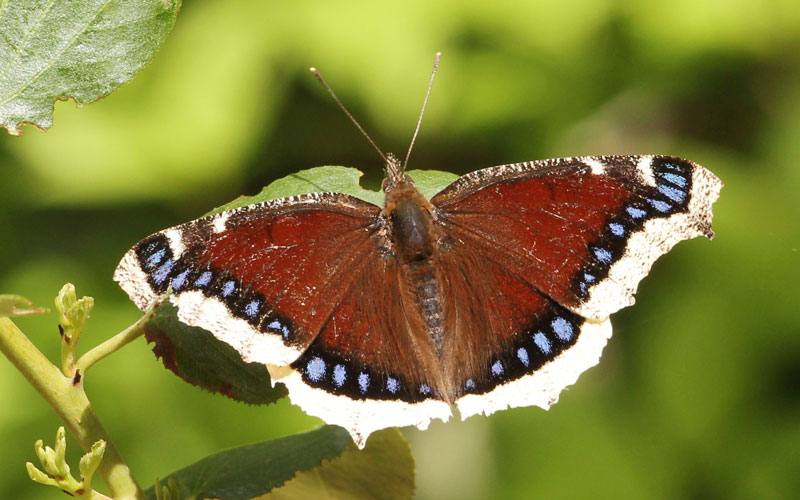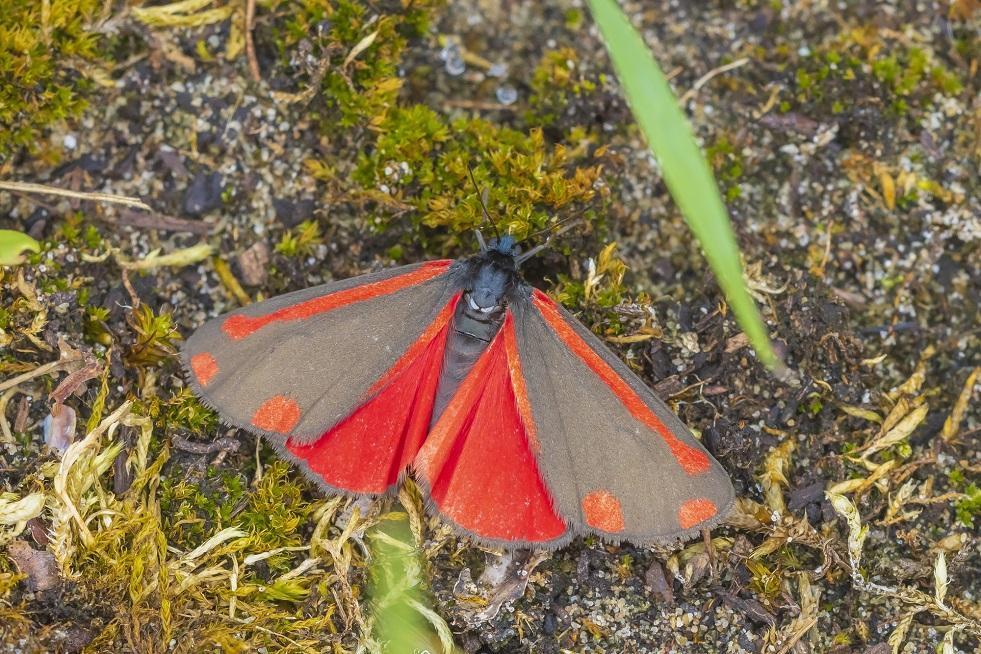Elephant Hawk Moth (Deilephila elpenor)
Updated on
17/11/2022The elephant hawk moth or large elephant hawk moth derives its name from its caterpillar’s resemblance to the trunk of an elephant. Its peak flight season is June and September. The nocturnal species flies from dusk till the morning. It has a maximum flight speed of 4.5 – 5.1 m/s.
Scientific Classification
- Class:Insecta
- Order:Lepidoptera
- Family:Sphingidae
- Genus:Deilephila
- Species:D. elpenor
Conservation Status
Description
The 2.4-2.8-inches moth has olive-brown colored forewings with a pink border. Two pink lines also cross the wings. The first line is thicker and ends at the center of the wings close to a white dot. The lower second line begins at the white inner margins and runs up to the tip of the wings.
The inner half of the hind wings are black, gradually turning pink from the middle outwards. White fringes outline it. The head, thorax, and body are also olive-brown with pink marks all through.
Distribution: The moth is most common in central Europe and is widely distributed in the entire Palearctic region. It is especially common in England, Wales, Ireland, and Scotland. It is also present in Asia (including Japan), and in British Columbia, Canada.
Habitat: Heathland, rough grassland, hedgerows, sand dunes, the open countryside, woodland, and even urban gardens
Do They Bite/Sting: No.
Lifespan: Up to 5 weeks.
Predators: Brown huntsman spiders , bats.
Behavior and Characteristics
Diet
The moth feeds on the nectar of flowers that open or produce nectar at twilight or night, being especially attracted to honeysuckles. It is skilled at hovering near flowers when it extends its long, straw-like proboscis to get its food. Its wings flap at a high frequency to keep it stable in this motion, which costs it lots of energy and time. So its visual powers are strong, with its eyes capable of seeing colors even in low light and correctly identifying which is a food source. Its sense of smell also helps in this regard.
Life Cycle
1. Egg Stage
The eggs are laid by the females singly or in pairs on the leaves of plants like bedstraws and rosebay willowherbs which can act as food sources for the caterpillars. The whitish-green glossy eggs are also laid on dahlias, fuchsias, and lavenders in gardens. They hatch in about 10 days.
2. Larva Stage
The young larvae or caterpillars are yellowish-white to green. On maturity, they are brown-gray with black dots along their length. They measure up to 3 in (7.62 cm) and weigh between 0.14 and 0.26 oz (4-7.5 g). The final segment has a backward curving spine or ‘horn’ of the same color as the body. During this stage, they eat 0.39-1.06 oz (11-30 g) of leaves.
3. Pupa Stage
After around 27 days, the fully grown larvae pupate underground or at the base of a plant in plant debris. They line the pupal chamber with a few silk strands and overwinter in this form. The brown, 40-45 mm long pupae are speckled in darker brown. The divisions between its segments appear black.
4. Adult Stage
The adult wingspan is 60-70 mm. There’s very little difference between the adult males and females of this species. The females can activate sex pheromones, give out mating calls, and show off their ovipositors in an attempt to mate.
FAQs
In spite of their colorful and bright looks, elephant hawk moth caterpillars, as well as adults, are not poisonous or harmful to humans or pets.
Source
ukmoths.org.uk, biopix.net, norfolkwildlifetrust.org.uk, britishwildlife.fandom.com, ukmoths.org.uk, butterfly-conservation.org




